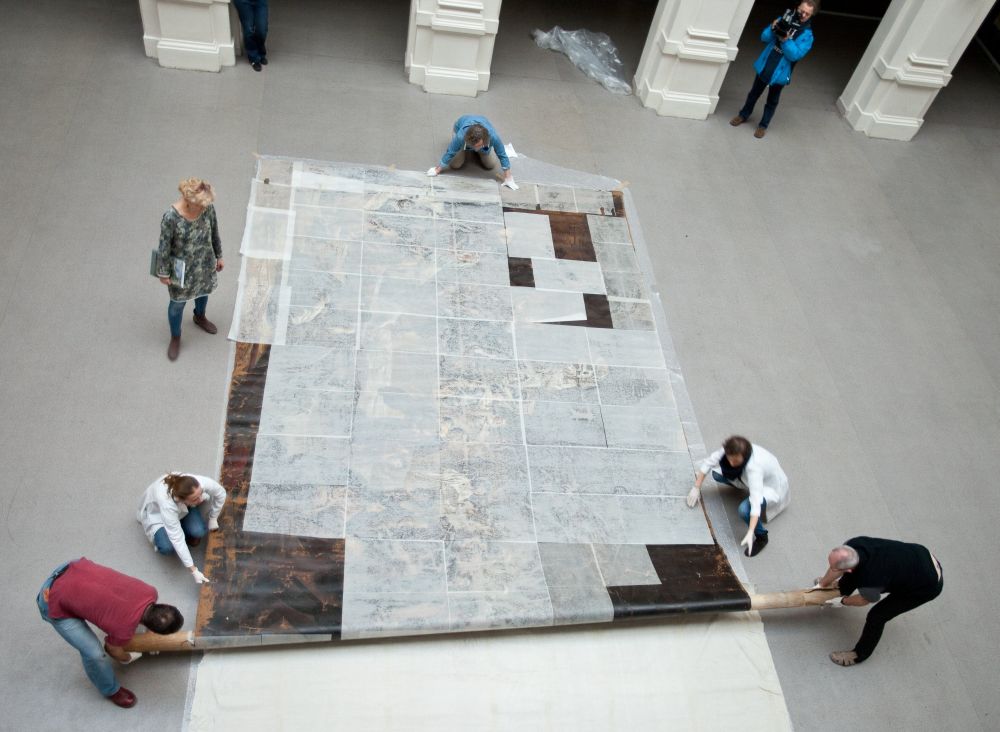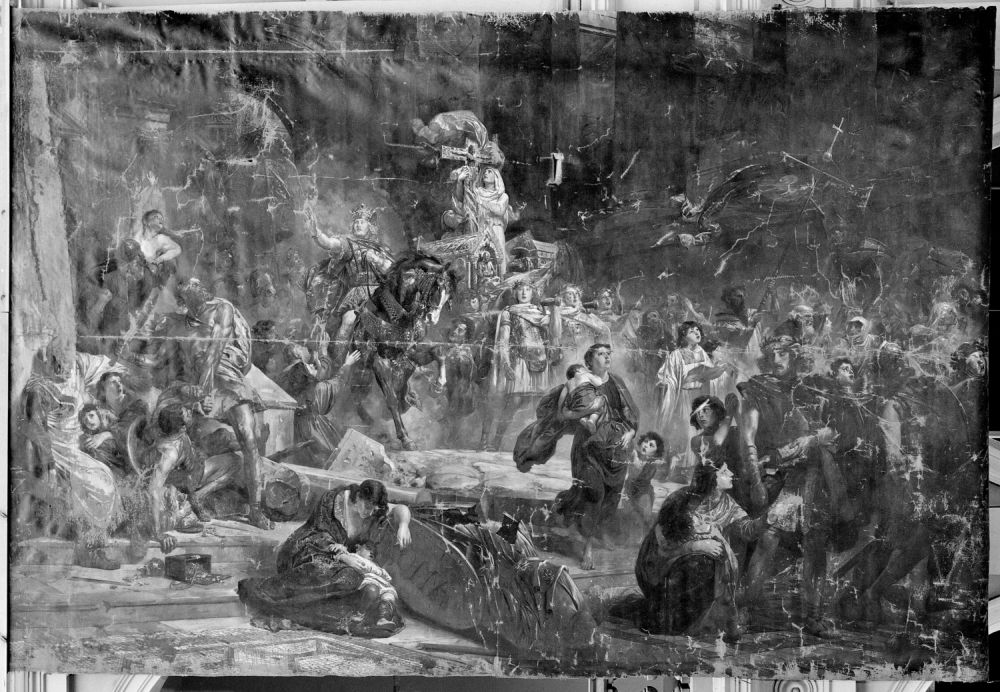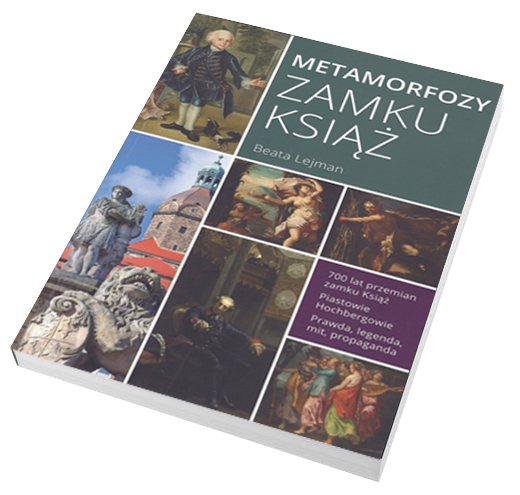
“Entry of Alaric into Rome”, by Wilhelm von Lindenschmit, is one of the largest easel paintings (411 x 613 cm.) in Poland that deals with a historical subject. It portrays a scene associated with the time of the great migrations of peoples.
“It shows the triumphant march of Alaric (c. 370 – 410), pre-eminent leader of the German tribes, who conquered Rome. His breach of the inviolable Eternal City has been viewed as marking the ancient empire’s fall. Alaric, on a black horse, makes an eloquent gesture to stop the barbaric plundering, and escorts a procession of Christians who are taking reliquaries and other liturgical valuables back to the basilica of St. Peter. The painter means to express a vision of a spiritual transformation whereby new religious faith is projected into the future, proving stronger than the weakening power of the gods of antique culture,” explained Beata Lejman, curator of the “Metamorphoses of Książ Castle” exhibition.
Because of huge size of the painting it could not be presented, and so it lay in storage for several decades. A year ago Piotr Oszczanowski, director of the National Museum in Wrocław, took the decision to restore the painting and then to present it in Książ Castle. The restoration work, which took place between 2 March and 30 June, 2016
.The restoration of the painting was sponsored by the KGHM Polish Copper Foundation.

Begun in 1886, the canvas features the vigour that is characteristic of nineteenth-century historicism. In 1890, the artist sent it to the collection of the Lusatian Hall of Remembrance in Görlitz (now the Zgorzelec Cultural Centre), from which it was taken, in 1956, to the collections of the Silesian Museum in Wrocław, now the National Museum in Wrocław. Because of its huge size it could not be presented, and so it lay in storage for several decades. A year ago Piotr Oszczanowski, director of the National Museum in Wrocław, took the decision to restore the painting and then to present it in Książ Castle.
– ”The most significant damage to the painting occurred because the canvas was cut out from its frame, folded in half and rolled up in 1945, which led to the chipping of painting layers, the appearance of plaster in them, and warping and tearing”, explained Beata Lejman. “The restoration of the work began with the cleaning of the face and back, removing chips on paint layers and patches. Following this, the torn and weakened canvas was smoothened, and strengthened with new linen material glued on the back. Chemical and microscopic analysis of samples helped pigments to be identified, and thanks to the technique of Fourier transform infrared spectroscopy, an adhesive was identified as oil paint. Lost grout and paint layers were restored. Finally, a varnish was applied which made the composition clearer, gave it depth and brought out the details of the presentation and subtle colour tones. After the painting was stretched on a specially built self-expanding loom, it was attached to a wall on a frame constructed in Książ and the picture was set into it.”
The restoration of the painting was sponsored by the KGHM Polish Copper Foundation.
Below we present the painting before the restoration:

All tickets bought for visiting Książ Castle include admission to a temporary “The Metamorphoses of Książ Castle” exhibition (this provision does not apply to tickets purchased for special attractions like Książ by night).
The admission prices to the castle may be found: here.
More information about the “The Metamorphoses of Książ Castle” exhibition may be found here.

Much more information on the exhibition, as well as its routes, may be found in the publication titled “The Metamorphoses of Książ Castle” (english version is available) by Dr. Beata Lejman, curator of the National Museum in Wrocław, and of the exhibition. The book is available at the castle, as well as at on the online shop.